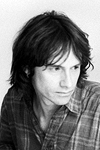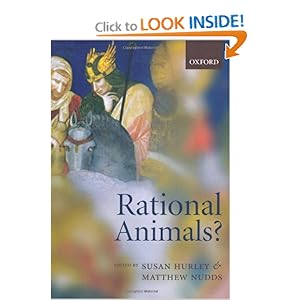Hailed as ‘a ground-breaking work’ upon its original release in
1990, the unabridged, fully illustrated, 325-page edition of The
Rose-Tinted Menagerie has now been republished by Iridescent in Amazon
Kindle ebook form. From the circus amphitheatres of ancient Rome, to the
first travelling dolphin shows in America, Europe and the Far East…
From the global trade in wild animals, to the captive chimps and
dolphins exploited as tools of war… Through two thousand years of
history, The Rose-Tinted Menagerie explores the human attitudes that
have shaped our species' conquest-driven relationship with nature as a
whole, a psychology as evident in the taming of the wild beast for the
circus arena, argues the author, as in the razing of forests or the mass
extinction of species.
Διαβάστε τις πρώτες σελίδες του βιβλίου
εδώ.
Ιστοσελίδα βιβλίου, αγοράστε το βιβλίο στο
Amazon UK.
Prior
to its first publication in 1990, author and investigative journalist
William M Johnson spent five years researching The Rose-Tinted
Menagerie. His research took him to big tops, menageries and dolphin
pools throughout the length and breadth of Europe, and to circus shows
from as far afield as the Soviet Union and the United States. From his
own undercover work and from the testimony of scores of ex-circus and
dolphin show staff, by 1990 Johnson had built up a formidable catalogue
of evidence that, upon publication, dismayed wildlife experts, shocked
the casual reader and provoked political debate:
The Rose-Tinted Menagerie.
While some establishments have since shut their doors forever — such as
the infamous dolphin ‘striptease’ revue at the Moulin Rouge in Paris —
these historical snapshots lucidly expose forms of cruelty and
exploitation tragically still all too prevalent elsewhere, from the
brutal capture of dolphins from the wild, to the sordid travelling
dolphin shows currently entertaining locals and tourists in the Far
East.

Απόσπασμα από το βιβλίο
1.6 ΤHE DOLPHIN CIRCUS
Following P.T. Barnum's ill-fated display of white whales
in his New York Museum in 1860, it was not until 1913 that cetaceans
were again seen in captivity, this time when C. H. Townsend, curator of
the New York Aquarium, stumbled upon the idea exhibiting dolphins as an
unbeatable novelty to attract the crowds. Thus on 12 November 1913, five
bottlenose dolphins - the first ever to be brought into commercial
captivity - were caught in North Carolina and transported on a three day
journey to New York. In June 1914 Townsend wrote that there had never
been a more successful display in the Aquarium's 12-year history. The
last of the dolphins, succumbing to pneumonia, died in 1915 after 21
months in captivity. But it would take another quarter of a century
before a captive dolphin would be trained and put through its paces to
entertain a human audience. The year 1938 saw the inauguration of Marine
Studios in Florida and the arrival of the facility's first bottlenose
dolphins. According to anecdotal accounts or stories that have gradually
turned to fable with age, the very beginnings of dolphin dressage were
conceived here more or less accidentally. During feeding time at Marine
Studios, it is said, dolphins gradually fell into the habit of jumping
up to catch the fish that were thrown to them, and this miniature
spectacle always amused the public, the keepers and curator. Then a year
later in 1939, Cecil M. Walker, then responsible for maintenance of the
water purification pumps on the night-shift, observed one evening how a
dolphin pushed a pelican feather across the surface of the water
towards him. "Just for the hell of it" he took the proffered feather and
threw it back into the water, whereupon, to his great surprise, the
dolphin brought it back again. The game continued with Walker
experimenting with a ball, an inner tube of a bicycle, small stones and
other objects. As the game took shape with other dolphins joining in the
act, it began to resemble the repertoire seen today in every
dolphinarium in the world. At least, that's how the story goes, a tale
which has its fair share of Hollywood ingredients, even for the humans
involved: from the lowly position of night foreman, Walker was quickly
promoted to the position of general-director at Marine Studios.
Soon, not only spellbound tourists and day-trippers
were beating a path to see the only, the original, the amazing,
performing dolphins but also world-renowned scientists, and it is
interesting, even amusing, to see how rapidly the notions and
"discoveries" of science, blinkered by the pride of human intellect,
fall into obsolescence, divorced from a timeless spiritual respect for
the sanctity of life. Internationally-respected zoologist Heini Hediger
for example, could scarcely contain his enthusiasm for Marine Studios'
sensational new animal act. Describing his visit in a 1954 paper
entitled Sketches about Animal Psychology in the Zoo and Circus,
Hediger enthuses: "The most important in this town situated directly on
the sea are two aquaria of distinctly American proportions - hence the
biggest in the world - so that those enormous pools are rightly no
longer called aquaria but oceanaria." In fact, just one of those
"enormous" pools, home to no fewer than 11 dolphins, measured a mere
22.5m in diameter and 3.6m deep - grossly inadequate even by today's
standards.
Similarly, a Hediger paper entitled
Dressage Experiments With Dolphins,
published in 1952, begins by recalling Pliny's fable of a boy who had
gained the love of a dolphin by feeding it regularly with bread, and who
was carried across the sea every day to school on the animal's back.
Hediger notes that scientists have always viewed such stories as lacking
any foothold in reality and that they are best left to poets and
writers of fairy tales. But 2000 years later, he goes on to say, there
is at least a dolphin in Florida which obeys the commands of its trainer
and even allows itself to be harnessed to a surf-board. Thus, he
concludes, for humans to be carried over the water with the help of a
dolphin is today quite feasible. Hediger goes on to record how sea-lion
trainer Adolf Frohn was appointed to teach the dolphins their dressage
stunts in the "generous facilities" provided by Marine Studios - a pool
of about 8m in diameter and about 1.5m deep. It was in this special
dressage pool, notes Hediger, that Frohn trained the especially gifted
Tursiops truncatus
called "Flippy". Reading between the lines of the scientific treatise,
one can perceive a subjective struggle between scientific intellect and
what could best be described as the human conscience. "But 'Flippy'
wasn't a fish," Hediger solemnly declared, "and one nearly had to
suppress the question as to whether it was an animal at all, when it was
looking at you sideways with a twinkling eye from less than half a
meter away." Indeed, if it were not for the intellect's constant calling
to heel by scientific rationality, Hediger continued, he might have
been tempted to look at the dolphin instead as "an enchanted creature".
The same conflict between thought and feeling, the same uncanny,
mystical experience of kinship, has haunted many a dolphin trainer,
scientist and visiting child. Sadly for humanity, sadly for the dolphin
and sadly for the world, the more delicate sense of feeling or intuition
is so often regarded as a threat to the intellect that it is either
overruled, suppressed or trampled. 'Flippy', Hediger notes, was fed a
strictly-weighed portion of 6kg of fish, an amount "determined by the
relatively small possibility of movement." Because the pool was so
shallow, Hediger blandly recorded, the dolphin had become exposed to the
summer sun without adequate protection, the resulting sunburn
manifesting itself "in a strong reddening mainly of the light parts of
the grey, smooth, plastic-like skin." The scientist could find nothing
morally repugnant in the show-biz style of the exhibition. Here at
Marine Studios, Hediger commented, it is not a question of "scientific
dressage but of show dressage but the fact that even this circus-like
dressage can, in principle, be of scientific value cannot be denied."
Πηγή











